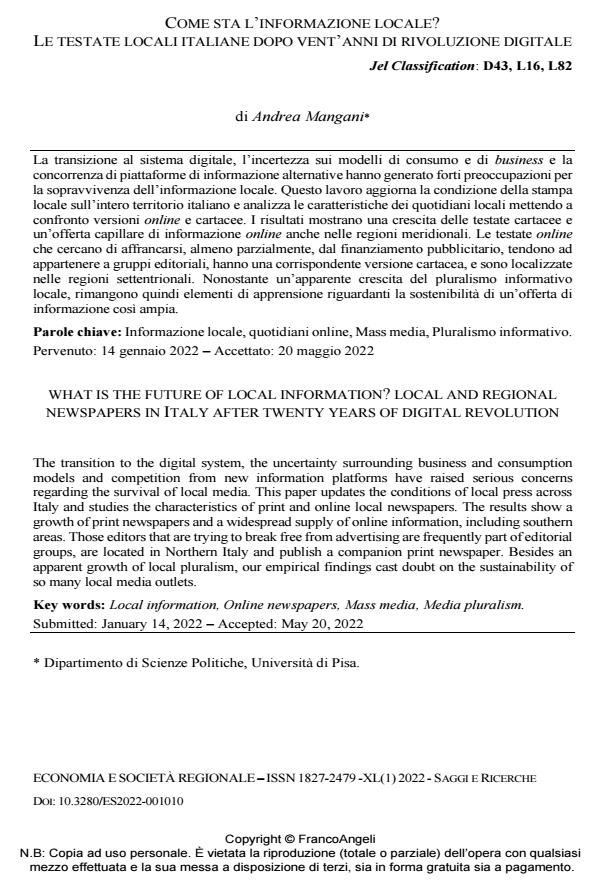What is the future of local information? Local and regional newspapers in italy after twenty years of digital revolution
Journal title ECONOMIA E SOCIETÀ REGIONALE
Author/s Andrea Mangani
Publishing Year 2022 Issue 2022/1
Language Italian Pages 19 P. 126-144 File size 327 KB
DOI 10.3280/ES2022-001010
DOI is like a bar code for intellectual property: to have more infomation
click here
Below, you can see the article first page
If you want to buy this article in PDF format, you can do it, following the instructions to buy download credits

FrancoAngeli is member of Publishers International Linking Association, Inc (PILA), a not-for-profit association which run the CrossRef service enabling links to and from online scholarly content.
The transition to the digital system, the uncertainty surrounding business and consumption models and competition from new information platforms have raised serious concerns regarding the survival of local media. This paper updates the conditions of local press across Italy and studies the characteristics of print and online local newspapers. The results show a growth of print newspapers and a widespread supply of online information, including southern areas. Those editors that are trying to break free from advertising are frequently part of editorial groups, are located in Northern Italy and publish a companion print newspaper. Besides an apparent growth of local pluralism, our empirical findings cast doubt on the sustainability of so many local media outlets.
Keywords: Local information, Online newspapers, Mass media, Media pluralism.
Andrea Mangani, Come sta l’informazione locale? Le testate locali italiane dopo vent’anni di rivoluzione digitale in "ECONOMIA E SOCIETÀ REGIONALE " 1/2022, pp 126-144, DOI: 10.3280/ES2022-001010